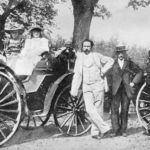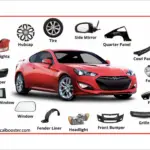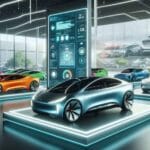The modern motorcar is something we take for granted. But it didn’t suddenly spring, fully-formed, into existence; it’s the product of more than a century of incremental change and improvement. It’s strange to think that the motorcars of a few generations ago were unrecognisable from those of today – and that, just a few generations before that, the idea of a carriage that drove under its own power was the stuff of science fiction. Now, we can buy cars to suit a wide range of personal tastes and budgets – and we can lease them for the long-term, too.
Let’s take a look back through time, and trace the path of this revolutionary piece of technology.

The 19th Century
There are several candidates for the title of the first modern car, but perhaps the most convincing of them is Karl Benz, whose Motorwagen was unveiled in 1886. While it only came with three wheels, it did travel on its own power, making it an automobile in the strictest sense of the word. Benz would later patent spark-plugs, radiators, gear systems, throttles, and other components which became fundamental to the modern motor-car.
The 20th Century
From there, things began to progress rapidly. A Frenchman named Rudolf Dieselcame up with his internal combustion engine just under a decade later. And then, a decade after that, the Ford Motor Company brought the first mass-produced automobile to the market in the form of the Model T. While it wasn’t the first ever automobile, it was the first to be sold at a price-point that American motorist could afford. This price point was achieved through assembly-line production, which at the time was revolutionary. The vehicle went on to sell 15 million units.
At the time, it was unclear whether the internal combustion engine would win out over the electric alternatives – but the success of the Model T killed off any lingering doubt about which technology would dominate the market for the next century.
Of course, at the time, emissions weren’t a concern. It would take almost a century for the world to wake up to the dangers of climate change and air pollution, and for the electric car to re-emerge as a viable alternative to (and replacement for) the fossil-fuel-powered car. Much of this change has been spearheaded by Tesla, and its Model 3.
What does the Future have in Store?
Between the Model T and the Model 3 has come a hundred years of design and innovation. Rubber tyres and suspension have made the ride smoother, even at higher speeds; roll-cages and crumple zones have made driving safer; and the introduction of parking sensors, lane assist, and automated braking have taken some of the responsibility of driving away from fallible humans and placed it into the hands of less fallible machines. It’s likely that we’ll see even greater change over the coming decades – and that the car of the future will be just as unrecognisable as the car of the past!








